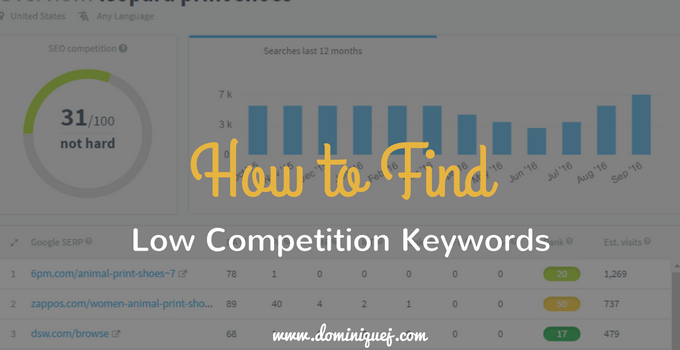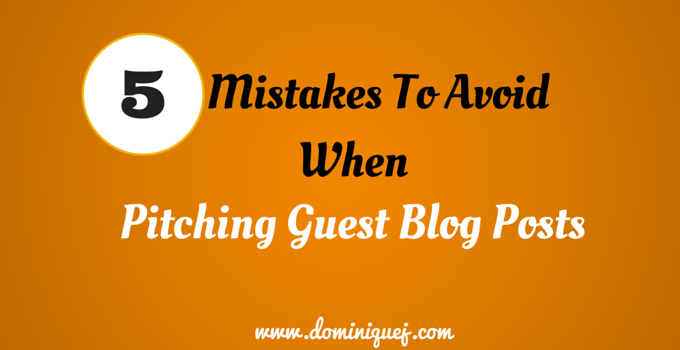Struggling to come up with blog topic ideas? We’ve all been there. You sit in front of your laptop slamming your head against the keyboard trying to get some kind of inspiration. Sometimes it’s not even a case of not having any good ideas, it’s more about figuring out the best way to get your ideas out of your mind, and into the computer. I’ve given you 5 quick ways to get blog topics before, but this time I’m going to go a little bit deeper, and give you 5 more ways to come up with blog topics based on a form of content arbitrage.
What Is Content Arbitrage?
Basically, content arbitrage is taking content that you’ve consumed from one place, and then putting your own spin and twist on it, and placing it somewhere else like your blog.
I want to be very clear here, I’m not talking about stealing other people’s content and trying to pass it off as your own. I’m talking about consuming a piece of content, learning from it, and then teaching what you’ve learned to your own audience in your own voice and style. Always give credit to your original source.
The main difference between this post and my other post about creating blog topic ideas is that these techniques all focus on teaching something you’ve learned from existing content. When it comes to blogging and particularly content marketing, teaching your audience something new should always be one of your top goals. Whenever you learn something new, try to teach it to your audience.
It’s so important for content creators to also be content consumers, because it’s what allows you to never run out of new ideas. I’m always reading blogs, watching videos, listening to podcasts, and occasionally even reading a book to learn more about marketing, blogging, and content. Then, I’m able to take what I’ve learned, and teach it to my audience in my own unique voice and style. After reading this post, you’ll be able to do the exact same thing.
1. Break down the content from an infographic
Infographics rock. They give you small, quick bites of info, usually statistics, in a way that’s eye catching and easy to digest. But a lot of the times, infographics just give you the surface level information. There’s not enough space to go in depth on each piece of the graphic, because they’re designed to be more visually appealing than just text.
That gives you a great opportunity to expound on the content inside the infographic and turn it into a blog post. Find an awesome infographic online on Pinterest, Google, or a directory like Daily Infographic. A quick search on any of these sites for “topic infographic” will pull up plenty of infographics that you can use for ideas. This is great for when you have a general idea of what you want to write about, but nothing specific. For instance, maybe you want to write about eating healthy for your fitness blog, but haven’t figured out an exact topic. But then you stumble across an infographic like this, and now you have an exact topic to write about, a vegan diet, and plenty of information to use.
Here’s a great example from Social Media With Priyanka of how to take the info from an infographic, and use it as fuel for a new blog post. The great thing about this technique is that the structure of the post is pretty much laid out for you because most infographics are organized into sections. From that point, all you have to do is create the intro, and then go more in depth on what’s inside the infographic.
Make sure you include the infographic in the post too, because we all know how powerful visual content is these days, and you should acknowledge where the idea for the post came from.
2. Relay content from a YouTube video
YouTube is probably one of the best educational resources online, despite being filled with a ton of videos of cute animals and people vlogging about absolutely nothing. For pretty much any topic you can think of, there’s probably at least a few videos on YouTube about it. You can re-purpose the content of the video into a blog post!
Use the info you learned from watching the video to teach your audience something new. Because here’s the thing. Some people can retain information better from reading than from watching a video. Or they just might not necessarily be searching YouTube for the specific topic. For instance, when I want to see what’s going on in the world of social media marketing, I go to blogs like Rebekah Radice’s or Social Media Examiner. I don’t really search YouTube for social media tips, even though there’s a ton of videos on it.
Another reason this works is because some YouTube videos are really long. If you can condense a 20-30+ minute video into a 500-3000 word SKIMMABLE article, then you’re making it easier to consume for people who don’t want to sit through an entire video. Even though video is great, it’s not as easy to skim through and get the main points as an article because if you fast forward two minutes into a video, you could miss a part that you really wanted to see. But with an article, you can scroll through and look at the different headings and immediately read the parts you want.
3. Go in depth on topics from a book
I’m not going to sit here and pretend like I’m an avid book reader. I’m not. But I have gotten a lot of great information from books that I’ve been able to use in blog posts. I want to be clear, I’m not talking about plagiarizing someone else’s writing. I’m talking about learning new concepts or having your mindset shifted about a particular topic, and letting that come out through your content.
Now let’s get specific on exactly how to use books for blog content ideas. One approach is to use different chapters of a book as blog topics. For instance, I’m currently reading through the Inbound Marketing book by Brian Halligan and Dharmesh Shah (Hubspot’s founders). The way the book is structured is with chapters, and then small sections within each chapter. For instance, Chapter 11 is “Convert Prospects into Leads”, and it touches on a bunch of different topics like landing page best practices, creating functional forms, and tracking your progress. Each of those sub-topics could be an entire blog post, using the information I learned from reading the book. Within the posts, I would reference the book and give credit where credit is due.
This method is so valuable because there are sooooo many books out there that you can use to get ideas. And the truth is that there are a lot of people that won’t buy an entire book, but they’ll read 10 blog posts about different topics discussed within the book. Your audience may not be willing to invest the time or money to buy and read the book, but if you do, then you can use that as a way to offer value to your readers.
4. Talk about something you heard in a podcast
I talk about Entrepreneur on Fire all the time here. It’s the only podcast that I’ve ever consistently listened to. And I have to tell you, I get sooooo many ideas for content from that podcast that it’s ridiculous. The entrepreneurs that get interviewed on the show drop so many gems, and valuable information that I can’t help but soak it in like a sponge, and relay it in different posts of mine, or even in tweets. In fact, this very blog post was inspired by one of the EOF interviews with Ray Higdon, where he talks about becoming an expert on a topic by investing in learning, and then teaching that information to your audience. This is basically my approach to content arbitrage.
There’s already a bunch of podcasts out. But as the podcasting community continues to grow, there’s no doubt that you’ll be able to find great podcasts about whatever industry you’re in to learn from, and then teach that information to your own audience.
5. Take notes from a presentation or conference and turn it into a blog post
The last technique I want to talk about is actually something that I got from that Ray Higdon interview (or at least I think it was that one), and it’s something that I’m striving towards for next year. It’s probably one of the most powerful ways to get new content ideas because it pulls on the power of exclusivity. Basically, you go to events and conferences where people in your industry are speaking, and take notes. Then, use those notes and turn them into blog posts.
Here’s why I like this technique. A lot of these conferences and speaking events:
- Have an entry fee, some of which can be on the high end
- Are in specific cities, so not everyone can attend
That gives you the advantage of having access to content that a lot of your audience probably doesn’t. You’re able to teach them something that they otherwise probably wouldn’t be able to learn if they live in another part of the world, or don’t have the money to attend some of the higher priced conferences and events.
Consume To Create
What the whole content arbitrage technique all really boils down to is consuming content in order to create better content for your audience. It’s really easy to get caught up in producing as much content as you can, and completely stop consuming. But if you really want to become a better content creator and marketer, and have an endless supply of fresh content ideas, then take a second to see what else is out there.
It’s like musicians making a new album. A lot of them will take months or even years off between albums to just live a little bit and get new inspiration. Whether it’s from listening to other music that’s out or traveling the world. Then, when it’s time to go back to the studio to make music, they’re able to give you new perspectives instead of the same old thing over and over again. That’s the same approach you should take with your content (minus the taking months or years off of creating content part).
Do you have any unique ways of getting new content ideas? What do you think about content arbitrage? Let me know in the comments or tweet me!


![Blogging By The Numbers [Infographic] Blogging By The Numbers [Infographic]](https://dominiquej.com/wp-content/uploads/2015/05/blogging-statistics.png)

